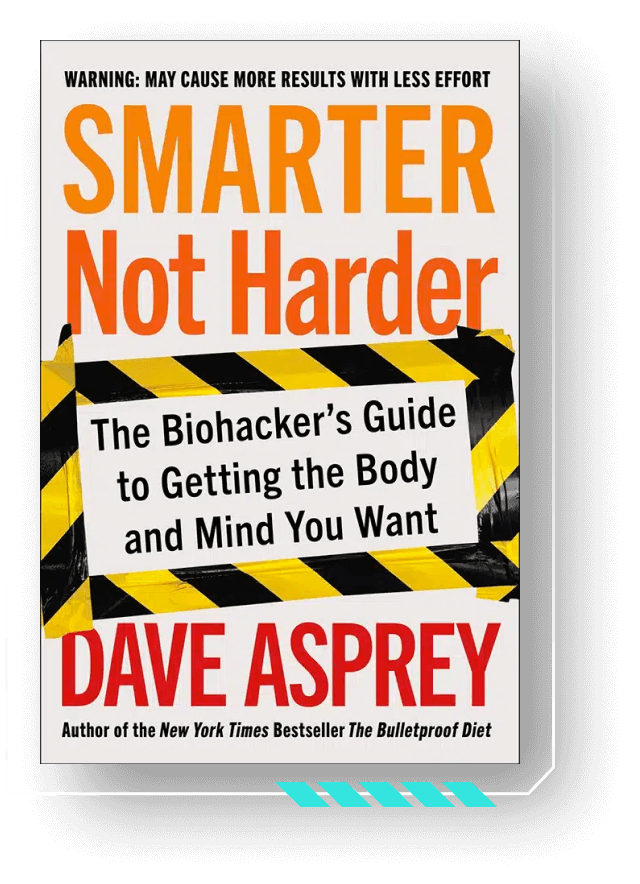
The weekend is the perfect time to experiment with your biology. You don’t have to invest lots of time or money into biohacking; sometimes small tweaks can make big changes in your day-to-day life. Here are five simple hacks you can try this weekend.
1. Sleep on the floor (yes, really)
If you suffer from back problems or joint pain, think twice before you invest in the latest orthopedic or pillow-top mattress. In fact, you might want to consider ditching your mattress altogether. [1]
All 200 species of primates experience musculoskeletal problems. But of all the species, we suffer way more of these issues than forest dwellers and folks who sleep on the ground.
Turns out that when you sleep on the ground, you intuitively find positions that can correct musculoskeletal imbalances causing lower back pain, knee pain, bunions, and more.
Think of the floor as your “automatic manipulator,” or nature’s chiropractor. The ground keeps your chest immobile, aligning your vertebrae and lubricating your joints.
One position to try on your floor or otherwise hard surface is lying on your side. Your lower shoulder should be hunched forward in a way that supports your neck. Alternatively, you can use your arm as a pillow. Your neck should angle toward the ground a bit, which will apply healthy pressure to your cervical spine. This way, your vertebrae stretch and realign with each breath.
If you’re not ready for the full floor transition, try rolling up your pillowtop or simply sleep on different parts of your mattress, rather than in the same spot every night. Or try ditching your pillows. Let your body lie in a natural, instinctual position and change sleeping postures often.
[Tweet “Ditch the Mattress: 5 Biohacks For Your Spine, Brain & Immune Health”]
2. Hack your posture and spinal alignment in minutes
Hours of sitting at a desk, in your car, and in front of the TV takes a heavier toll than you might think. Chronic sitting slowly tightens your muscles, especially in your hips and lower spine.
“Static back” is a simple pose that uses gravity to your advantage to realign your spine and reduce pain naturally.
This pose places your shoulders in line with your hips to allow the muscles in your lower back to release using your own body weight. Placing your head in line with your shoulders and hips releases the muscles in your neck and jaw. As your muscles release, the rotation in your pelvis and torso will begin to neutralize. This is big news if you suffer from back or hip pain or tightness.
- Lie with your back on the floor, your feet and calves elevated on a chair, table, or blocks, with knees bent at 90 degrees. The backs of your knees should be flush with the edge of the block or chair so the legs are fully supported. This is the only way that the muscles will be able to fully release.
- Your arms should be in line with your shoulders, palms facing up.
- Once you’re in position, take several full, deep breaths. No phones, no distractions. Take this opportunity to chill out.
- Stay in position until your lower back and hips are settled flush with the floor. Or, you can set a timer for about 5 minutes. If your back and hips never settle to the floor, don’t worry. Just persist with this pose daily for 5-10 minutes at a time.
3. Fasting to stay young and rebuild your immune system
A recent study found that fasting on nothing but water for three days can do wonders for your biology. When you skip food, your body cleans house. It gets rid of damaged white blood cells and turns on stem cell growth to replace your whole immune system with a brand new model. The immune boost isn’t minor, either. Fasting for 72 hours was enough to negate the downsides of chemotherapy in cancer patients. The study also found that fasting inhibits PKA, an enzyme that may make you age faster. [2]
If you decide to fast this weekend, start your day with Himalayan pink salt dissolved into water. It’ll give you trace minerals and electrolytes and curb your hunger response. The first day is the hardest; after that you’ll switch into deep fat-burning mode and it’s relatively smooth sailing.
And if going hungry for three days isn’t your style, you can always do Bulletproof Intermittent Fasting. You’ll get many of the benefits of a short fast, without the hunger.
[Tweet “Try these 5 hacks to make easy, noticeable changes in your life: “]
4. Update your workout playlist for better performance
Listening to music during intense bouts of exercise can increase your enjoyment of the workout and the likelihood you’ll stick with your program. [3]
A recent study asked 20 young, healthy, fit male and female volunteers what their favorite music was and subjected them to a series of grueling sprint interval training (SIT) workouts on stationary bikes. All participants were new to this type of exercise. Workouts included a 2-minute warmup, followed by four 30-second bursts of really uncomfortable sprints, 4 minutes of rest in between. Two sessions were performed, one with and one without music.
Perceived enjoyment, attitude, and intentions to perform similar exercises in the future were measured after each session. Sessions with a soundtrack significantly increased volunteers’ positive attitudes toward the training and made it more likely they would repeat intense interval training in the future.
Presumably, listening to upbeat music will improve your performance and attitude toward your training regardless of the type of workout, so update your playlist and get moving!
5. Meditate with a friend
Everyone knows how life-changing meditation can be, but few people do it regularly. It’s easy to think “I’m doing it wrong,” or “I’m not good at this.”
Here’s the thing: in the digital age, you get more stimulation than anyone in human history. Your brain isn’t used to quiet because it’s saturated with websites, TV, ads, music, podcasts, Facebook, Instagram, Snapchat, bills to pay, work to do, and all the other trappings of a modern life.
Your brain freaks out when you remove all those stimuli. It doesn’t have anything to do, so it conjures up distracting thoughts and/or pop music lyrics to occupy the silence. It tells you you’re doing a bad job, or that you’re bored, or anything else to get the quiet to stop. But here’s the good news – the fix is as easy as it gets. Just let the thoughts happen. Fighting them pulls you out of meditation. Allow any thoughts or feelings to come and go. By noting them and letting them go, you are already meditating.
Another reason a lot of people don’t make meditation a regular thing is that the results aren’t immediate. You usually start to feel the effects of meditation after doing it daily for a week or two.
So hack your accountability by getting a friend to meditate with you. You’re much less likely to skip days or quit when you have a partner. Bonus points if you choose a specific place to meditate – the beach, a forest, a quiet room – and meditate there together every day. Building that structure makes you more likely to turn meditation into a habit. You can also use a habit tracking app for further incentive.
All these hacks are quick and free. Why not give them a try this weekend? And if you liked this article, subscribe below for more ways to upgrade your biology. Thanks for reading!
References:
[expand title=”Click to read the complete list of references.” swaptitle=”Click to hide references.”]
[1] https://www.ncbi.nlm.nih.gov/pmc/articles/PMC1119282/
[3] https://www.ncbi.nlm.nih.gov/pubmed/27748159
[/expand]











